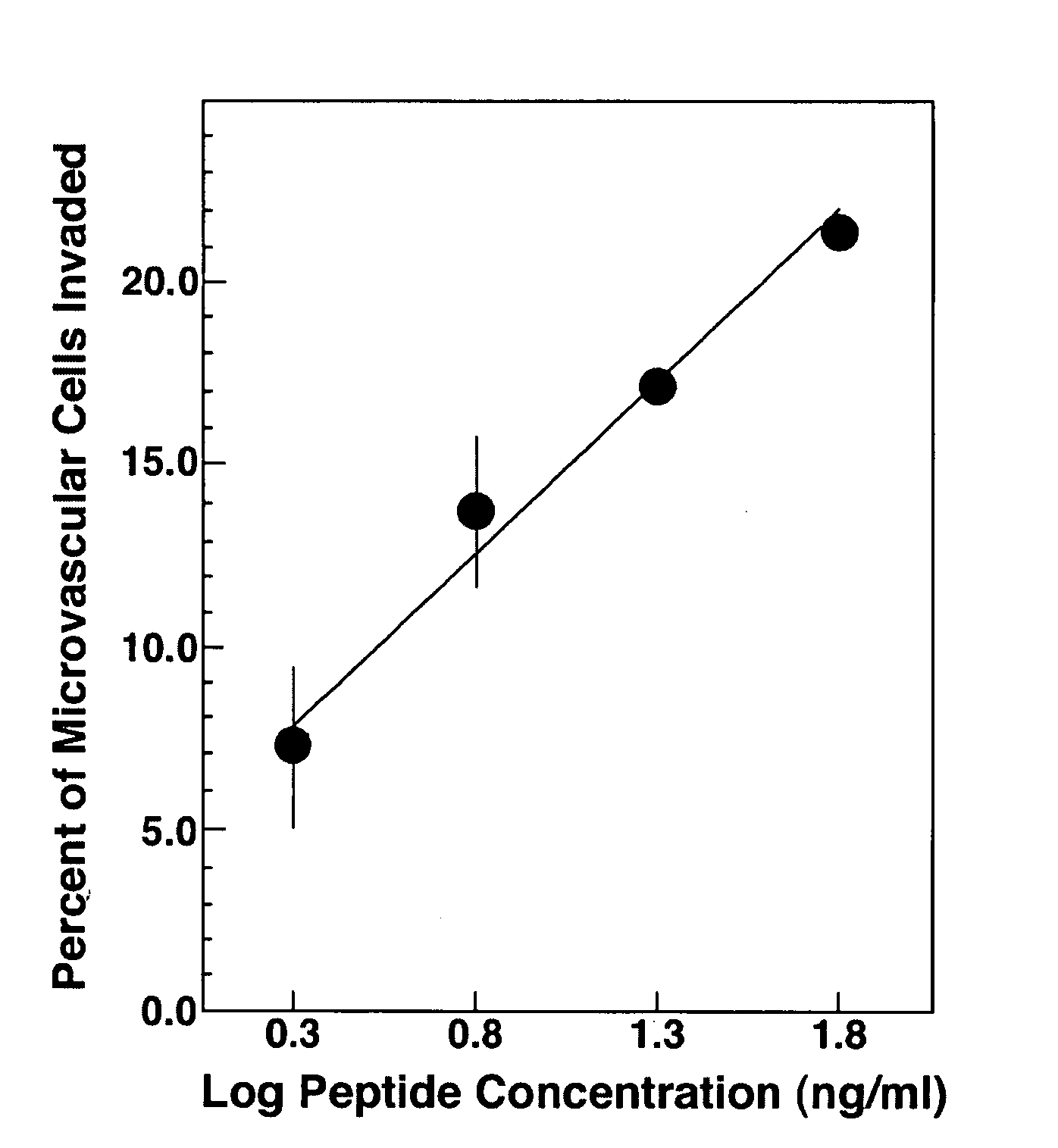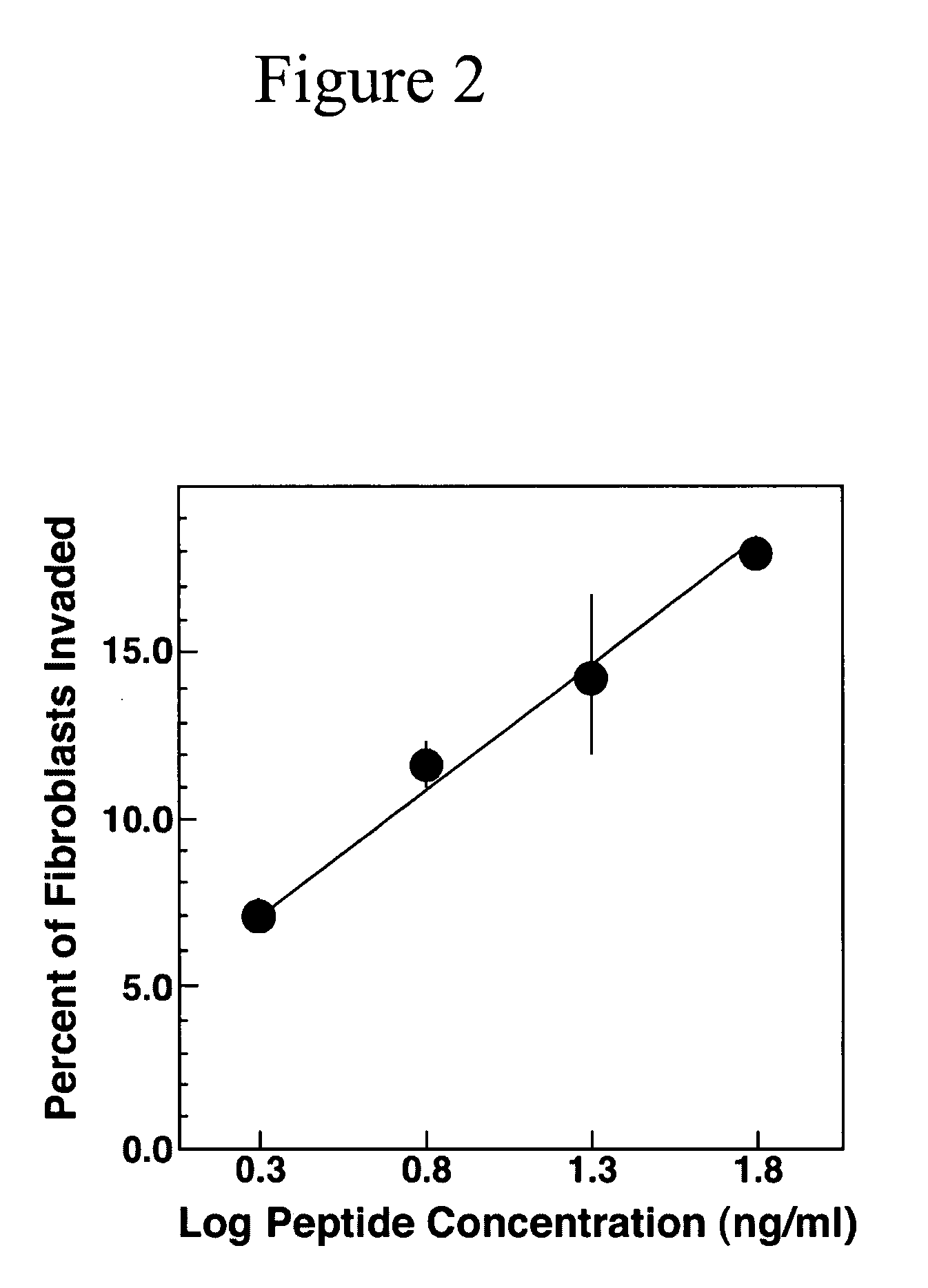Methods and compositions for the enhancement of wound healing
a technology of compositions and wound healing, applied in the field of methods and compositions for the enhancement of wound healing, can solve the problems of diabetes often encountering considerable difficulties in healing ulcers and controlling infection, and achieve the effects of stimulating dermal wound healing, reducing the time required for closure, and enhancing the invasion of human neonatal fibroblasts
- Summary
- Abstract
- Description
- Claims
- Application Information
AI Technical Summary
Benefits of technology
Problems solved by technology
Method used
Image
Examples
example 2
Enhancement of Wound Healing in Diabetic Mice
A. Methods
[0053] Each treatment group consisted of 10 mice with duplicate, dermal wounds of 12.5 to 16.5 mm.sup.2 made in the shoulder area. Complete methods were as described (Livant et al., (2000) J. Clin. Invest. 105: 1537-1545). Treated animal were treated with 10 .mu.g switch (PRC) sequence from MMP2 (Ac-PRCGNPDVANY-NH.sub.2). Wound areas were measured by integration of digital images.
B. Results
[0054] The results are shown in FIG. 7. One treatment with the PRC peptide just after wounding decreased the time required for closure of all db / db wound by 50%, relative to untreated db / db mice. The closure of PRC-treated wounds appears to be as rapid as that of db / + non-diabetic mice.
example 3
Methods
[0055] This example described methods useful in performing some embodiments of the present invention.
[0056] Cell culture and SU-ECM invasion assays. In SU-ECM in vitro invasion substrates, a basement membrane surrounds a blastocoel, in which invading cells localize shortly after suspension and placement on the outer surfaces. Even in the presence of serum, these invasion substrates have been shown to be free of background invasion by normal cells (Livant et al., (1995) Cancer Res. 55: 5085-5093; Livant et al., (2000) J. Clin. Invest. 105: 1537-1545; Livant et al., (2000) Cancer Res. 60: 309-320). These invasion substrates have been used to define the invasion-promoting activity of the PHSRN sequence from the fibronectin cell-binding domain, a previously unanticipated function of this sequence. Ac-PHSRN-NH.sub.2 peptide has been shown to be a potent topical agent for stimulating dermal wound healing in obese diabetic C57BL6Ksdb / db mice (Livant et al., (2000) J. Clin. Invest. 1...
example 4
Testing the Effects of the MMP 1 Cysteine Switch Peptide on Dermal Wound Healing in Obese Diabetic Mice and in Their Heterozygous, Non-Diabetic Littermates
[0061] Biopsy punches 4 mm in diameter (Henry Schein, Inc., Port Washington N.Y.) are used to wound C57Bl6 KsJ db / db and C57Bl6KsJ db / + mice as previously described (Livant et al., (2000) J. Clin. Invest. 105: 1537-1545). Db / db mice and their non-diabetic, db / + littermates are obtained at 6 to 8 weeks of age from Jackson Laboratories (Bar Harbor Me.).
[0062] Db / db mice are aged at least an additional 2 weeks prior to use in wound healing experiments, to make certain that they display the impaired wound healing phenotype characteristic of this strain. Treatment groups consist of 10 to 20 dermal wounds each, or 5 to 10 db / db or db / + mice with duplicate dermal wounds. Anesthetized mice are wounded once or twice on the upper back by pinching the skin away from the underlying fascia and muscle, and pushing the biopsy punch through the s...
PUM
| Property | Measurement | Unit |
|---|---|---|
| concentrations | aaaaa | aaaaa |
| concentrations | aaaaa | aaaaa |
| concentrations | aaaaa | aaaaa |
Abstract
Description
Claims
Application Information
 Login to View More
Login to View More - R&D
- Intellectual Property
- Life Sciences
- Materials
- Tech Scout
- Unparalleled Data Quality
- Higher Quality Content
- 60% Fewer Hallucinations
Browse by: Latest US Patents, China's latest patents, Technical Efficacy Thesaurus, Application Domain, Technology Topic, Popular Technical Reports.
© 2025 PatSnap. All rights reserved.Legal|Privacy policy|Modern Slavery Act Transparency Statement|Sitemap|About US| Contact US: help@patsnap.com



